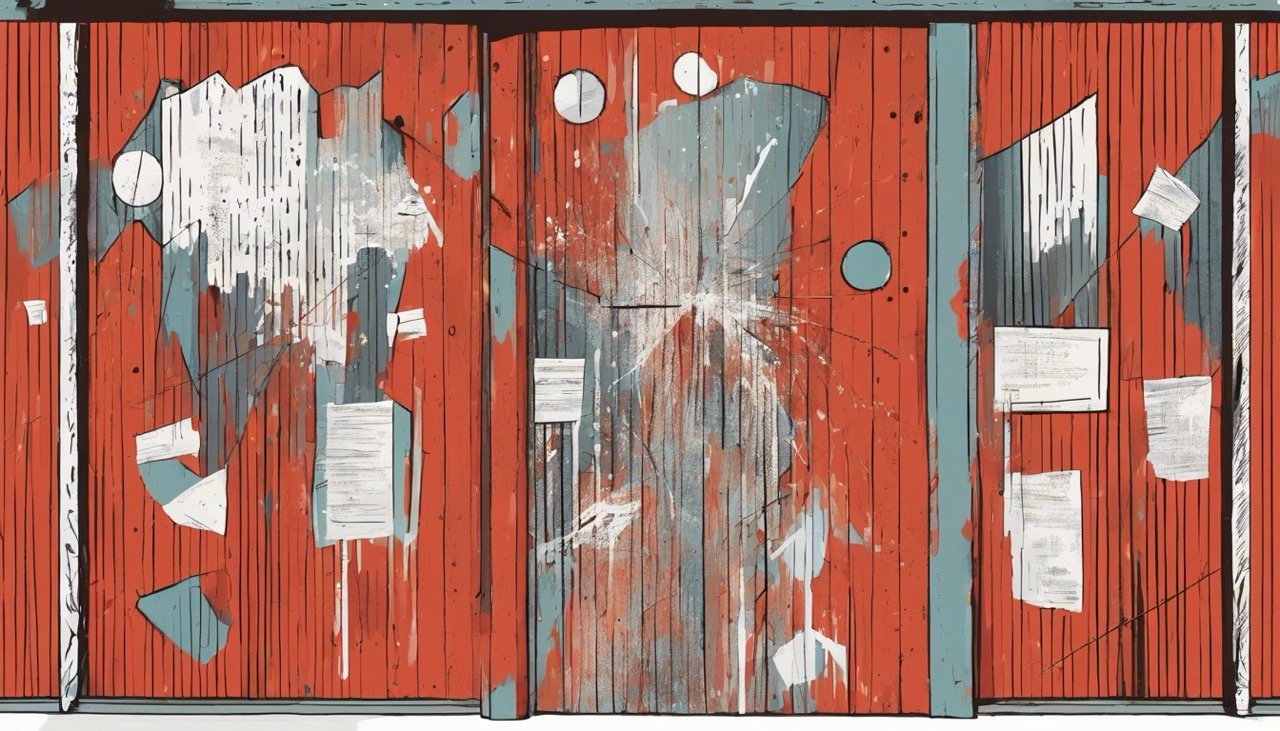Imagine you’re playing darts, but instead of aiming at a pre-drawn target, you throw darts randomly at a blank wall. After throwing, you draw the bullseye around the cluster of darts that hit the wall. This scenario might seem absurd, yet it illustrates the Texas Sharpshooter fallacy.
It probably comes from a Texan who randomly shoots at a barn and then draws a bullseye around the tightest cluster of bullet holes, claiming to be an expert marksman, this fallacy highlights a critical flaw in data interpretation. It’s a powerful metaphor for what can go wrong in design and consulting when we don’t start with a clear hypothesis.
In the world of consulting and design, the temptation to gather data first and form a hypothesis based on observed patterns is strong. However, this approach often leads us astray. Here’s why:
Finding Patterns in Randomness
Humans are natural pattern-seekers. When presented with a collection of data, we instinctively look for order and meaning. This can be beneficial, but it also makes us prone to seeing connections where none exist. By collecting data first and then trying to make sense of it, we risk identifying patterns that are merely coincidental, leading to erroneous conclusions.
The Importance of a Clear Target
Stating a hypothesis before collecting data is like drawing a target on the wall before throwing darts. This predefined target allows us to measure our success accurately. When we gather and analyze data with a specific hypothesis in mind, we can more objectively determine whether the evidence supports our initial assumptions.
The scientific method has been used for over 300 years, forming a well-established way of creating a hypothesis through inductive reasoning, testing it through experiments and statistical analysis, and adjusting or discarding the hypothesis based on the results.
Real Insights Over Seeming Fits
For clients, the difference can be substantial. Strategies based on a predefined hypothesis are grounded in clear, testable ideas. They reflect a structured approach to problem-solving that prioritizes objective analysis over subjective interpretation. On the other hand, strategies derived from post-hoc pattern recognition might seem insightful but often rest on shaky foundations.
Crafting Effective Hypotheses
To avoid the Texas Sharpshooter fallacy, start every design challenge by crafting a well-defined hypothesis. This process involves:
- Identifying the Problem: Clearly articulate the issue you aim to address.
- Formulating a Hypothesis: Develop a specific, testable statement about the expected outcome.
- Designing the Experiment: Plan how you will collect and analyze data to test your hypothesis.
- Collecting Data: Gather data in a manner that aligns with your experimental design.
- Analyzing Results: Evaluate the data objectively to see if it supports your hypothesis.
By following these steps, you ensure that your design process is rooted in rigorous, scientific thinking rather than serendipitous pattern recognition.
Conclusion
The Texas Sharpshooter fallacy serves as a cautionary tale for designers and consultants alike. In a field where data-driven decisions are paramount, starting with a clear hypothesis is not just a best practice—it’s essential. By setting your target before you throw your darts, you align your strategies with genuine insights and provide your clients with solutions they can trust.
Next time you embark on a design challenge, remember: draw your bullseye first. Your aim will be truer, and your conclusions more reliable.

